Growing Garlic
Let me say right at the outset that growing garlic is easy and doesn't require the expertise of a professional gardener or farmer.
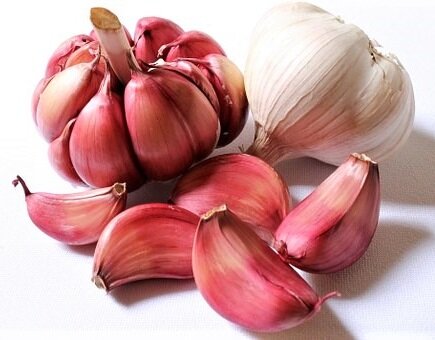
Garlic is a well known herb used in a variety of dishes all over the world. You don't need to buy questionable garlic that's possibly an irradiated imported product... stick some in every spare corner of your own garden.
Plan on growing garlic now, and with over 600 sub-varieties available today, you can pick the one that is suited to your environmental and climatic conditions.
Ideal Conditions for Garlic Growing
Garlic plants thrive in soil that is well drained and has a pH value between 6.0 and 7.0.
Making sure you weed the surrounding area and nourish the plants with lots of organic matter plays a significant role in growing garlic successfully in your little backyard.
Planting Garlic
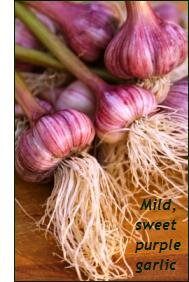
Anytime from early to mid winter (between September-December in northern Hemisphere and March-June in southern hemisphere) is good for planting garlic which is a fall plant.
Those in colder areas should plan on growing garlic earlier and ensure that they plant well enough in advance to allow the plant to take root and grow strong before the onset of winter.
If the roots aren't strong or haven't been given enough time to develop, the plant will not survive the harsh conditions of winter. Plants 'heave' out of the ground when the ground freezes. If their roots aren't strong, adding a 7-9cm (3-4") layer of mulch can often prevent this from happening.
Take the largest sized garlic clove you can find. Drill a hole that's 5cm (2") deep and place the clove with the pointed end facing up. The next clove should be planted in the same manner at least 12cm (5") away. The distance between two rows should be about 40cm (16").
Garlic Care
Spread a layer of compost on top and add mulch as recommended above to protect the cloves and help them in the germination process.
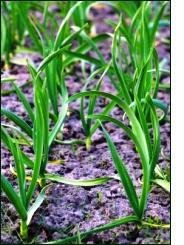
It's a good idea to put in fresh mulch right after the soil freezes. Let it stay there all through winter, only taking it off when spring arrives unless it's rotted down or is just a thin layer. This gives the sun direct access to the ground and its warmth benefits the growing garlic cloves.
Put on the layers of mulch again when you see the plant beginning to grow on the surface.
Topsets can be cut and used in curries as often as required. There's a belief that doing so affords more nutrition for the bulb's growth resulting in larger sized bulbs.
Make use of organic compost or organic fertiliser once or twice in spring to nourish the plants further.
Provide the growing plants with approximately 2.5cm (1") of water per week until you notice the foliage turning from green to yellow and falling over. This is an indication that the bulb is approaching maturity.
At this stage it is alright to make use of the leaves but don't make use of more than ¼ of the plant.
Harvesting Garlic
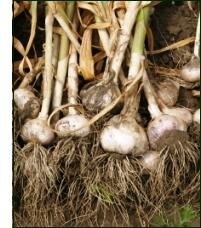
The time to start considering harvesting is when about half or more of the plant has turned yellow or you see the leaves closest to the ground turn brown.
The best way to harvest the bulb is to dig around it. Avoid uprooting and pulling out the plant as it can damage the bulb and make it difficult to store.
Clean them off and cure them by hanging them in a mesh bag in an airy room for about 3-4 weeks.
Snip off the roots and tops when they dry out and peel off the outer skins gently. They are then ready to store.
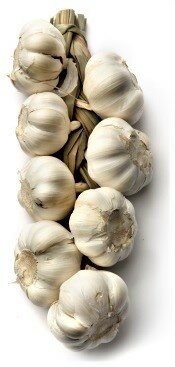
Now you are an expert on growing garlic, check out more herbs to grow: Growing Herbs





